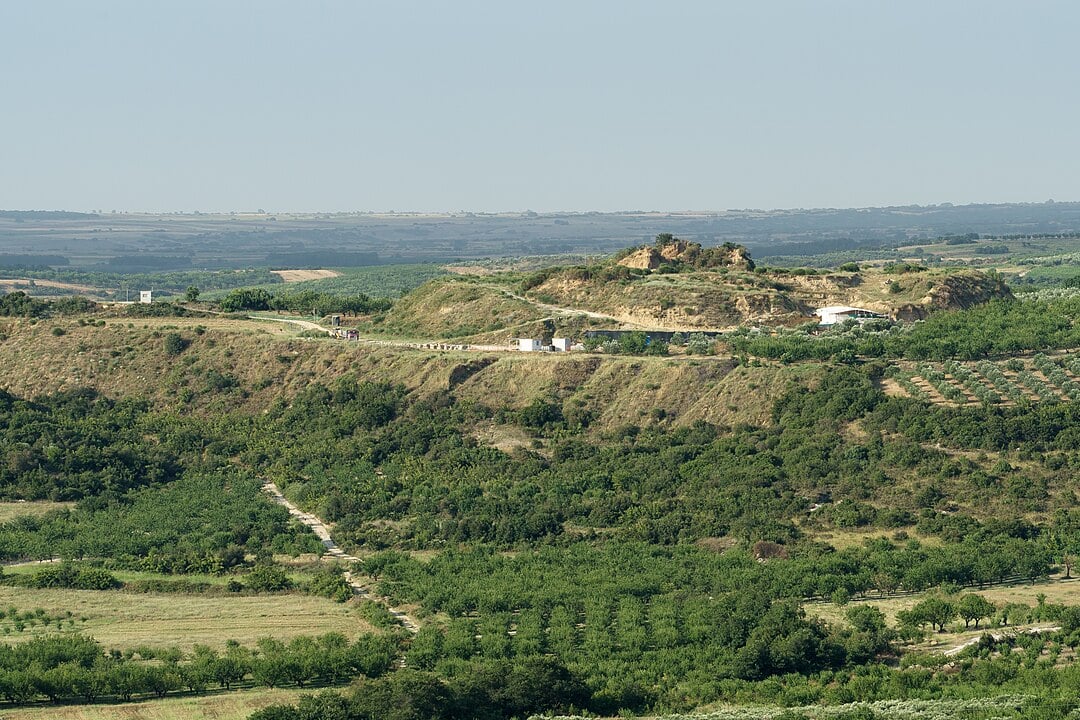

A new study has revealed that the Kasta Monument (Greek: Τύμβος Καστά), the largest known burial site in ancient Greece, was more than just an architectural feat. Researchers now believe it served as a solar-aligned tomb by Alexander the Great for his closest general and companion, Hephaestion.
Uncovered in 2012 in Amphipolis (Greek: Τάφος της Αμφίπολης), in northern Greece’s central Macedonia region, the tomb quickly gained international attention. Then, in 2015, a major historical breakthrough reshaped the narrative.
Scholars confirmed that the massive structure had been built on Alexander’s orders to honor Hephaestion, his trusted strategist and, some believe, the person he held dearest.
The tomb’s size and detailed design reflect the importance of its intended occupant. Among its most striking features is a mosaic depicting the myth of Persephone’s abduction, a story tied to the themes of death and rebirth.
The Kasta Tomb, the largest ancient burial mound ever discovered in Greece.
“The excavation team argued that the tomb was a memorial dedicated to the dearest friend of Alexander the Great, Hephaestion, based on three inscriptions which apparently link the tomb to Hephaestion…… pic.twitter.com/Z9kXyJtveV— LiorLefineder (@lefineder) April 7, 2025
Archaeologists say the inclusion of this scene adds a spiritual dimension to the site’s purpose. Atop the structure once stood the Lion of Amphipolis, a powerful symbol of strength and heroism.
Together, the artistry and symbolism suggest the monument was intended not only to mark a burial but to preserve a legacy.
In a study published in the Nexus Network Journal, researchers used 3D modeling and solar-tracking tools to examine how sunlight interacted with the monument’s layout.
The results revealed a deliberate alignment with the sun’s path, particularly during the winter solstice. Experts say this alignment was likely designed to illuminate certain features inside the tomb at specific times of the year.
Kasta Tomb in ancient Amphipolis, the largest ancient tumulus (burial mound) ever discovered in Greece.
4th c. BC, Macedonia/Greece pic.twitter.com/EKYJHUcrup
— Greek Heritage (@greece_heritage) February 10, 2024
One theory suggests the light may have once shone on a now-lost statue in the forecourt, creating a moment of ritual significance.
The integration of light and architecture, researchers say, reflects ancient Macedonian beliefs – especially those linked to the cult of Cybele – and may symbolize the enduring connection between Alexander and Hephaestion.
The study highlights the precision with which ancient builders incorporated natural cycles into their designs. The solstice alignment likely carried deeper meaning, echoing ideas of renewal and divine favor that were central to both religious rites and royal propaganda.
Researcher Andreas Savvides, who led the digital modeling effort, believes a sculptural element may have once played a key role in these light rituals. His reconstruction suggests sunlight was meant to activate the space, transforming architecture into a stage for remembrance.
This merging of modern technology and classical archaeology marks a turning point in how ancient monuments are studied. Digital tools like solar modeling don’t just confirm theories – they offer new interpretations, revealing layers of meaning previously overlooked.
The solar-aligned tomb built by Alexander the Great now stands not only as a historical structure but also as a lasting tribute to loyalty, power, and cosmic design. Just as sunlight once lit its sacred spaces, new research continues to illuminate the depth of its significance.
